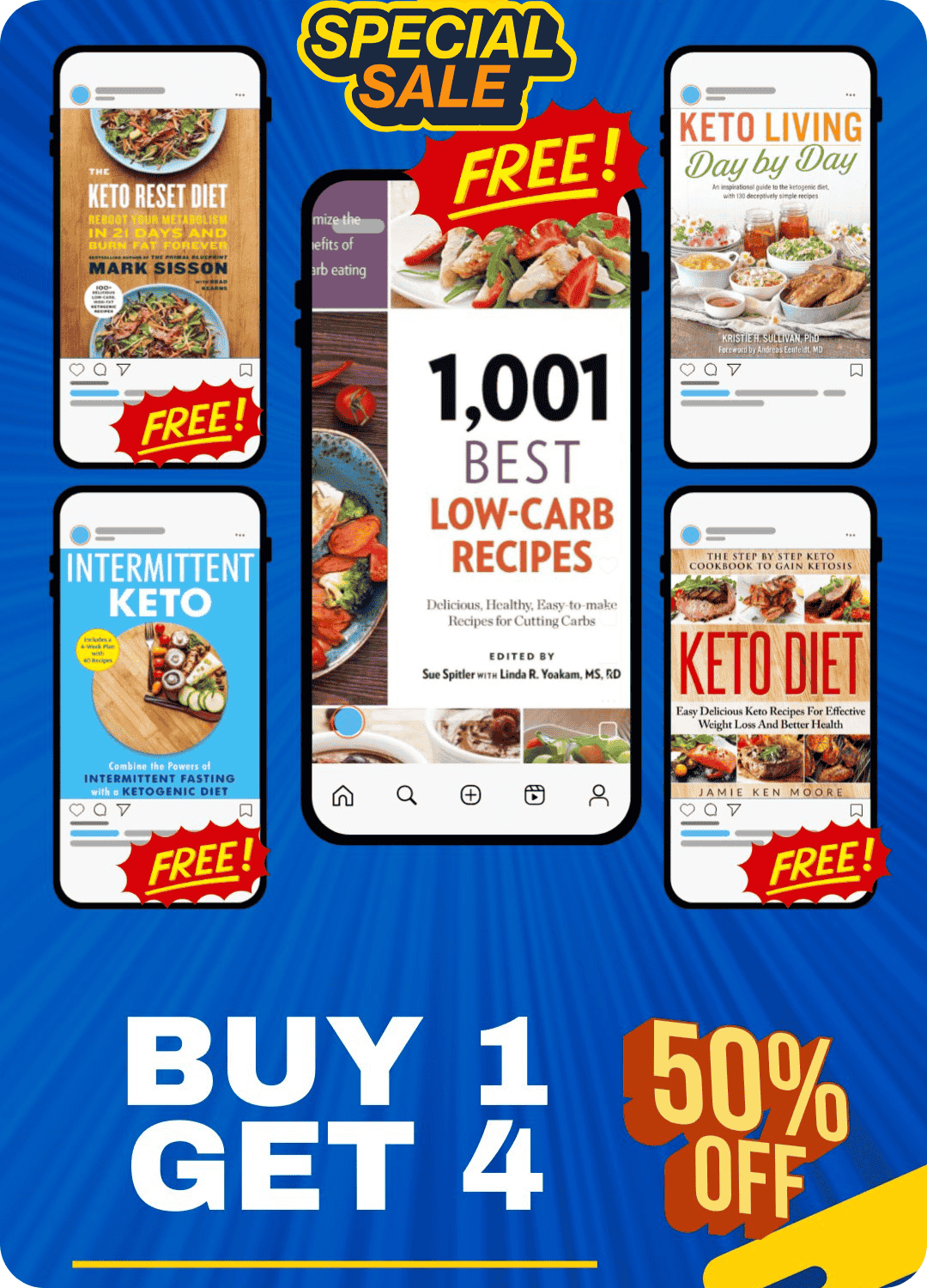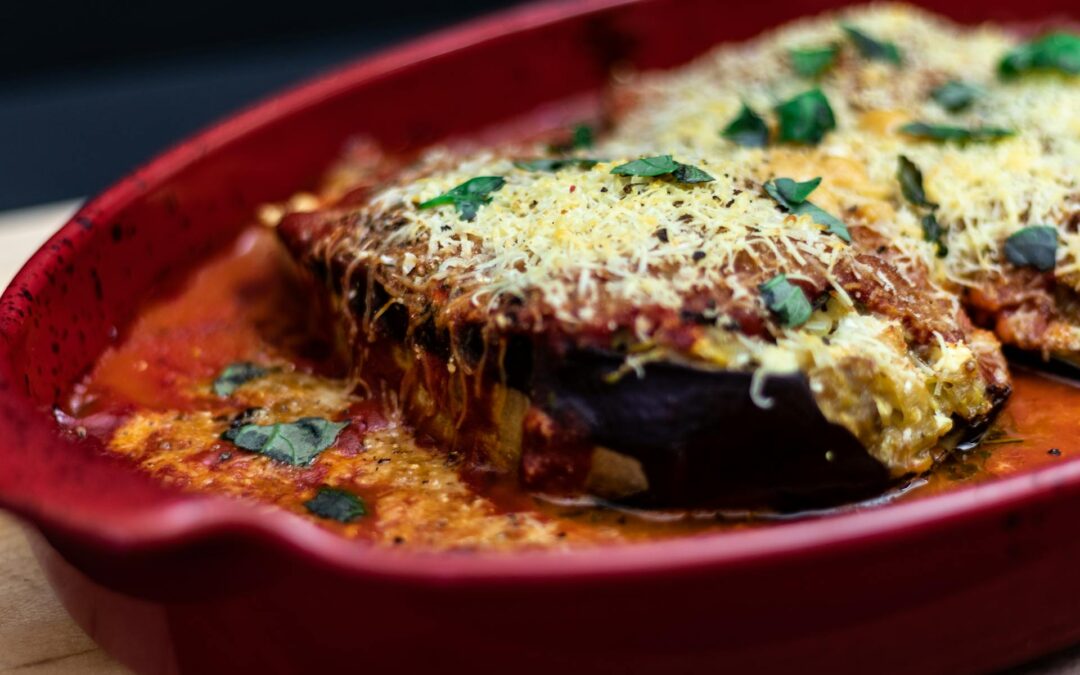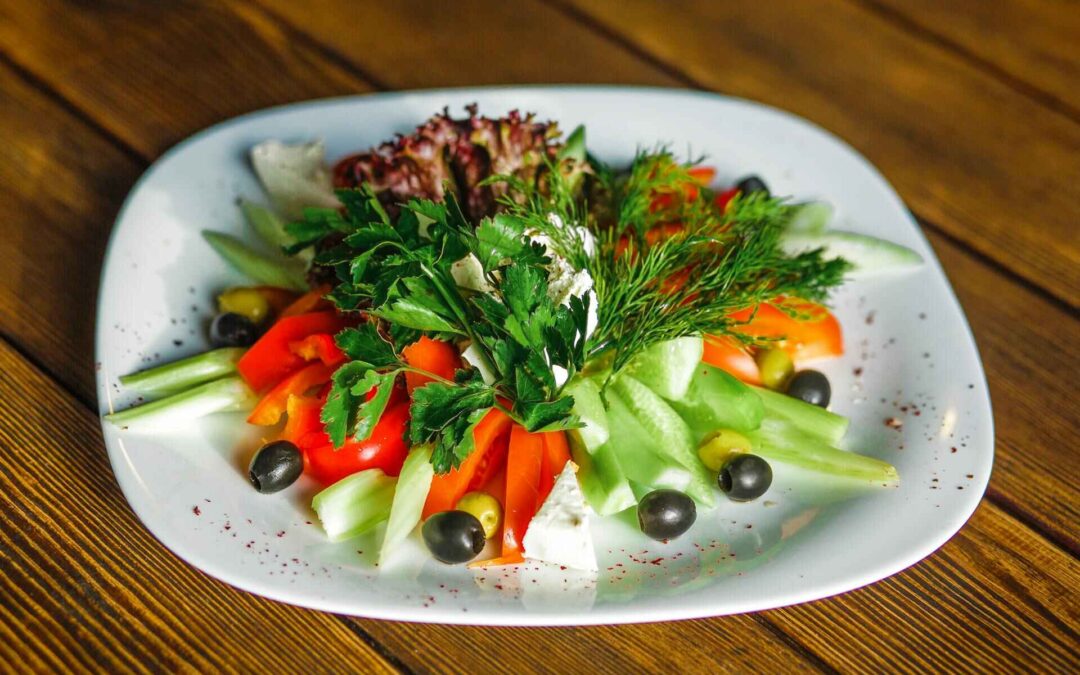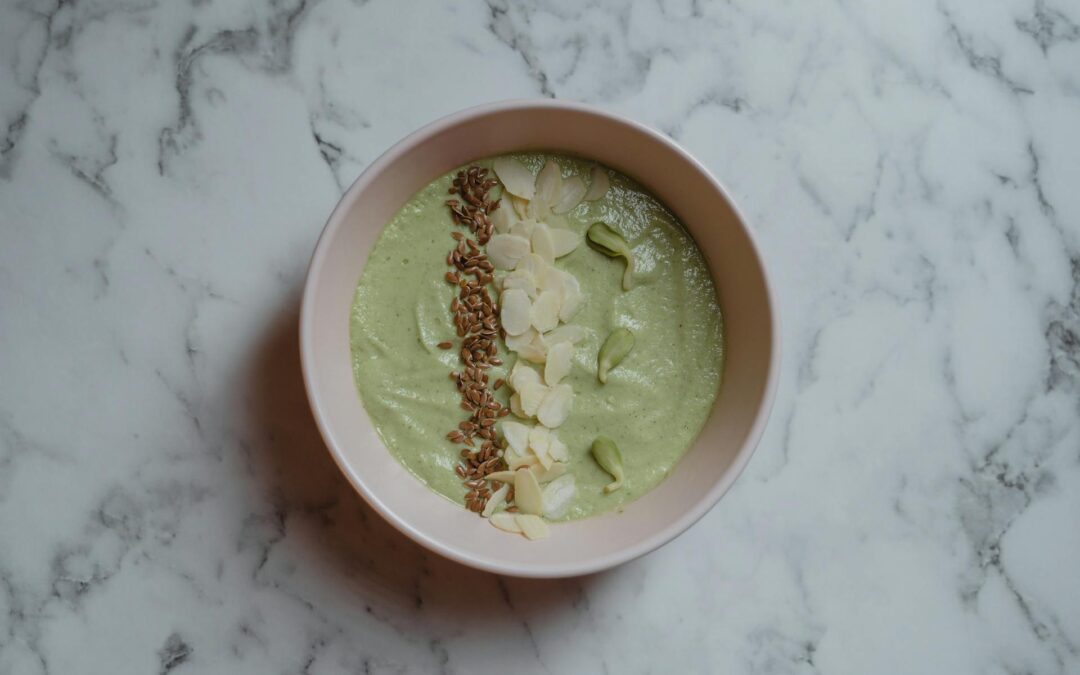If you’ve been searching for an effective way to shed extra pounds while sticking to a plant-based lifestyle, you’re in the right place. A low carb vegetarian diet for weight loss is not only achievable but can also be incredibly rewarding. This guide will walk you through everything you need to know—without sacrificing taste or nutrition.
Understanding Low-Carb Diets
When we say “low-carb,” we’re talking about cutting down on carbohydrates, especially refined carbs like white bread and sugar. Instead, the focus is on eating nutrient-rich foods that keep you full longer. (1)
Key Benefits of Low-Carb Diets for Weight Loss
- Stabilizes blood sugar levels, reducing cravings.
- Encourages your body to burn fat for energy instead of carbs.
- Helps curb appetite naturally.
Vegetarianism and Its Variants
Vegetarianism has been gaining popularity globally as more people turn to plant-based eating for health, ethical, or environmental reasons. But did you know that vegetarianism isn’t a one-size-fits-all diet? There are several variants of vegetarianism, each with its unique set of rules, benefits, and challenges. Understanding these variants is crucial, especially when you’re aligning them with a low carb vegetarian diet for weight loss. Let’s break it down. (2)
1. Lacto-Vegetarian
A lacto-vegetarian diet includes dairy products like milk, cheese, and yogurt but excludes eggs, meat, poultry, and fish. It’s a common variant, especially in cultures where dairy is a significant part of the traditional diet. (3)
- Benefits:
- Excellent sources of calcium and vitamin D from dairy.
- Versatile protein options like Greek yogurt, cottage cheese, and paneer (Indian cheese).
- Easy to incorporate into a low carb vegetarian diet by focusing on low-carb dairy like hard cheeses.
- Challenges:
- This may lead to over-reliance on dairy, which can be high in calories.
- Some dairy products, such as flavored yogurts, can have hidden sugars—read labels carefully.
2. Ovo-Vegetarian
Ovo-vegetarians include eggs in their diet but avoid all other animal products, including dairy. Eggs are a powerhouse of nutrients, making this variant particularly appealing for a low carb vegetarian diet. (4)
- Benefits:
- Eggs are an excellent source of complete protein and healthy fats.
- Extremely low in carbohydrates, making them a perfect fit for a low-carb approach.
- Versatile in cooking—think scrambled eggs, omelets with spinach, or hard-boiled eggs as snacks.
- Challenges:
- Relying solely on eggs for protein can get monotonous.
- Need to balance eggs with other plant-based foods for a well-rounded diet.
3. Lacto-Ovo Vegetarian
This is the most common type of vegetarianism, including both dairy and eggs but excluding meat, poultry, and fish. (5)
- Benefits:
- Wide variety of food options to ensure adequate protein and nutrient intake.
- Combines the benefits of both lacto-vegetarian and ovo-vegetarian diets.
- Allows for creative meal options like zucchini noodles with Alfredo sauce or low-carb frittatas with cheese and vegetables.
- Challenges:
- Like other variants, it’s easy to overconsume processed dairy or egg products.
- Requires mindful planning to ensure meals are low-carb and nutrient-dense.
4. Vegan
Vegans avoid all animal-derived products, including dairy, eggs, and even honey. A vegan diet relies entirely on plant-based foods, making it the most restrictive form of vegetarianism. While it can be challenging, it’s possible to follow a low carb vegan diet. (6)
- Benefits:
- Rich in fiber, vitamins, and antioxidants.
- Eco-friendly and aligned with ethical concerns for animals.
- Promotes a variety of whole foods like nuts, seeds, tofu, and low-carb vegetables.
- Challenges:
- Protein sources are limited to options like tofu, tempeh, and seitan.
- Vitamin B12, omega-3 fatty acids, and iron deficiencies can be common if not carefully managed.
- Requires more creativity to maintain variety and interest in meals.
5. Pescatarian (with Vegetarian Focus)
Some people identify as pescatarians, including fish and seafood in their otherwise vegetarian diet. While technically not vegetarian, this variant can be a transitional approach for those moving toward plant-based eating. (7)
- Benefits:
- Provides omega-3 fatty acids from fish, which are often lacking in vegetarian diets.
- Easier to meet protein needs without relying heavily on plant-based supplements.
- Challenges:
- While it includes fish, the carb content of side dishes must still be monitored to align with a low-carb plan.
- Some might find it ethically conflicting if the focus is on animal welfare.
Why Understanding Variants Is Crucial
Each variant of vegetarianism has its strengths and weaknesses. For those embarking on a low carb vegetarian diet for weight loss, your specific variant determines:
- Protein Options: Knowing what’s allowed helps diversify your meals and meet your macronutrient goals. For example, vegans rely on tofu and tempeh, while lacto-vegetarians can incorporate Greek yogurt.
- Nutritional Balance: Some variants, like veganism, require more planning to avoid deficiencies in essential nutrients like B12, iron, and omega-3s.
- Meal Flexibility: Your variant dictates what low-carb meals you can enjoy. A lacto-ovo vegetarian can indulge in a cheesy vegetable bake, while a vegan might choose a tofu stir-fry.
Why Combine Low-Carb and Vegetarian Diets?
Combining a low-carb approach with a vegetarian diet may seem unconventional at first. After all, many vegetarian staples like grains, legumes, and starchy vegetables are relatively high in carbohydrates. However, when done strategically, merging these two dietary styles creates a powerful tool for sustainable weight loss, improved health, and overall wellness. Here’s a deep dive into why this combination works so well and how it can be tailored for success. (8)
Synergistic Benefits for Weight Loss
A low carb vegetarian diet for weight loss is particularly effective because it tackles two key factors: calorie control and metabolic balance.
- Increased Satiety:
- Low-carb diets prioritize foods rich in protein and healthy fats, which naturally help you feel full for longer periods. When paired with plant-based options like nuts, seeds, and tofu, this can lead to reduced calorie intake without feeling deprived.
- Fat Burning over Carb Burning:
- By reducing carbohydrate intake, your body transitions into a state called ketosis, where it burns fat for energy instead of carbs. For vegetarians, this means leveraging healthy fats like avocado, olive oil, and coconut oil to fuel the body.
- Reduced Cravings:
- Stabilizing blood sugar levels with low-carb foods prevents energy crashes and curbs sugar cravings—a common pitfall in traditional vegetarian diets that rely heavily on carbs.
Enhanced Nutrient Intake
A low-carb vegetarian diet encourages a focus on nutrient-dense, whole foods, which can provide an abundance of vitamins, minerals, and antioxidants.
- Low-Carb Vegetables:
- Leafy greens, broccoli, zucchini, and cauliflower are packed with vitamins like A, C, and K while being low in calories and carbs.
- Plant-Based Proteins:
- Foods like tofu, tempeh, and nuts provide protein as well as essential micronutrients like magnesium and zinc.
- Healthy Fats for Absorption:
- Including fats like olive oil and nuts enhances the absorption of fat-soluble vitamins (A, D, E, and K), ensuring your body gets the most from your plant-based diet.
Combating Common Vegetarian Diet Pitfalls
While vegetarian diets are often celebrated for their health benefits, they come with some common pitfalls, especially when focused heavily on carbs.
- Carb Overload:
- Many vegetarians rely on carb-heavy foods like rice, pasta, and bread to feel full. A low-carb approach eliminates this dependence, emphasizing low-carb vegetarian-friendly foods like zucchini noodles, cauliflower rice, and almond flour-based recipes.
- Protein Deficiency:
- Plant-based eaters often struggle to get enough protein, especially if their diet is overly reliant on grains and legumes. By focusing on low-carb protein sources like tempeh, seitan, and edamame, you can avoid this issue.
- Hidden Sugars:
- Many vegetarian processed foods, like meat substitutes or flavored yogurts, are loaded with hidden sugars and refined carbs. A low-carb mindset helps you scrutinize ingredient labels and prioritize whole foods.
Supports Gut Health
Combining these two dietary approaches naturally incorporates fiber-rich, low-carb vegetables and plant-based proteins, which are excellent for gut health.
- Prebiotic Fiber:
- Foods like asparagus, artichokes, and garlic are low in carbs and rich in prebiotic fibers, which fuel the healthy bacteria in your gut.
- Improved Digestion:
- Many animal-based low-carb diets (like keto) lack sufficient fiber, leading to constipation. By choosing a vegetarian approach, you maintain a fiber-rich diet while keeping carbs in check.
Sustainability and Ethical Considerations
One of the biggest draws of a vegetarian lifestyle is its environmental and ethical benefits. Combining it with low-carb eating can make this approach even more impactful.
- Environmentally Friendly:
- Plant-based diets typically have a lower carbon footprint than meat-heavy low-carb diets. By reducing reliance on animal products and focusing on sustainable plant foods, you contribute to a healthier planet.
- Animal Welfare:
- For those who avoid meat for ethical reasons, a low carb vegetarian diet aligns perfectly with personal values while also supporting weight loss and health goals.
Balanced Hormones and Reduced Inflammation
A low-carb vegetarian diet can also support hormonal health and reduce inflammation, two factors often tied to weight gain and overall well-being.
- Blood Sugar Control:
- Minimizing refined carbs and sugars helps stabilize insulin levels, reducing the risk of insulin resistance—a common culprit behind weight gain and hormonal imbalances.
- Anti-Inflammatory Foods:
- Plant-based, low-carb foods like leafy greens, nuts, and seeds are loaded with antioxidants, which combat inflammation and promote overall health.
How to Structure Your Low Carb Vegetarian Diet
When it comes to following a low carb vegetarian diet for weight loss, structuring your meals effectively is crucial. This type of eating plan is more than just cutting carbs and avoiding meat—it’s about balancing nutrients, ensuring variety, and meeting your body’s energy needs. A well-structured diet not only promotes weight loss but also supports overall health and long-term sustainability.
Below, we’ll guide you step-by-step on how to design a low carb vegetarian diet that’s practical, nutrient-dense, and delicious.
Start with a Macronutrient Framework
To optimize weight loss and ensure proper nutrition, begin by defining your macronutrient goals. A balanced low carb vegetarian diet typically includes:
- Carbohydrates: 10–30% of daily calories
- Proteins: 20–30% of daily calories
- Fats: 50–60% of daily calories
These ratios encourage your body to burn fat for energy while maintaining muscle mass and stabilizing blood sugar levels.
Tips for Macronutrient Tracking
- Use apps like MyFitnessPal or Cronometer to monitor your daily intake.
- Focus on net carbs (total carbs minus fiber) to stay within your carb limits.
- Include healthy plant-based fats to meet your energy requirements.
Prioritize Low-Carb Vegetables
Vegetables are the cornerstone of any vegetarian diet, but not all are ideal for low-carb eating. Focus on low-carb, non-starchy vegetables that are rich in fiber, vitamins, and minerals.
Best Low-Carb Vegetables to Include:
- Leafy greens: Spinach, kale, Swiss chard
- Cruciferous vegetables: Broccoli, cauliflower, Brussels sprouts
- Zucchini and yellow squash
- Bell peppers and cucumbers
- Mushrooms
How to Use Them:
- Add leafy greens to smoothies or salads.
- Use cauliflower rice or zucchini noodles as low-carb substitutes for traditional grains.
- Roast veggies with olive oil and spices for a simple, satisfying side dish.
Focus on Plant-Based Protein Sources
Protein is essential for muscle repair, satiety, and overall metabolism. As a vegetarian, you have plenty of options to meet your protein needs without relying on animal products.
Top Plant-Based Protein Options for Low-Carb Diets:
- Tofu and Tempeh: Versatile, protein-rich, and low in carbs. Try marinating and grilling them for added flavor.
- Seitan: A high-protein, low-carb meat substitute made from wheat gluten.
- Edamame: Steamed soybeans that are both low-carb and packed with protein.
- Nuts and Seeds: Almonds, walnuts, chia seeds, and hemp seeds offer a protein and fat boost.
- Protein Powders: Opt for plant-based protein powders made from pea, hemp, or brown rice protein for smoothies or baking.
Pro Tip:
Combine protein sources to ensure you’re getting a complete amino acid profile, especially if you follow a vegan diet.
Incorporate Healthy Fats
Fats are the primary energy source in a low carb vegetarian diet, so don’t be afraid to add them to your meals. Healthy fats help keep you full, support brain function, and enhance the absorption of fat-soluble vitamins like A, D, E, and K. (9)
Best Plant-Based Fat Sources:
- Avocados: Perfect for smoothies, salads, or as a topping for low-carb crackers.
- Nuts and Nut Butter: Stick to unsweetened versions to avoid hidden sugars.
- Olive Oil: Use for cooking or as a dressing for salads.
- Coconut Oil: Ideal for high-heat cooking and baking.
- Seeds: Chia, flax, and hemp seeds provide omega-3 fatty acids and fiber.
How to Use Them:
- Drizzle olive oil over roasted vegetables or salads.
- Snack on a handful of almonds or walnuts.
- Blend chia seeds into puddings or smoothies for a creamy texture.
Best Protein Sources for Vegetarians
Protein is a crucial component of any low carb vegetarian diet. Luckily, there are plenty of plant-based options to choose from. (10)
Top Plant-Based Protein Sources
- Tofu and tempeh
- Lentils and chickpeas (moderation recommended due to carb content)
- Nuts and seeds, such as almonds and chia seeds
- Plant-based protein powders
Pro tip: Combine various protein sources to ensure a complete amino acid profile.
Healthy Fats: Your Secret Weapon
Don’t shy away from fats—they’re essential for energy and overall health.
Best Plant-Based Fats
- Avocado
- Nuts like macadamias and walnuts
- Seeds such as flax, chia, and hemp
- Olive and coconut oils
Incorporating these into your low carb vegetarian diet for weight loss keeps you satiated and boosts your metabolism.
Low-Carb Vegetables and Fruits
While fruits and veggies are staples of a vegetarian diet, some are better suited for low-carb eating.
Low-Carb Vegetables
- Spinach, kale, and other leafy greens
- Zucchini and cauliflower (great for rice or pizza crust substitutes)
- Broccoli and asparagus
Low-Carb Fruits
- Berries (strawberries, raspberries, and blackberries)
- Avocado (technically a fruit!)
- Olives
Avoid starchy vegetables like potatoes and corn, as well as high-sugar fruits like bananas and mangoes.
Crafting a Meal Plan
Planning is essential to keep your low carb vegetarian diet for weight loss on track. Let’s create a simple structure.
Sample Meal Plan
- Breakfast: Scrambled tofu with spinach and avocado.
- Lunch: Zucchini noodles with pesto and roasted cherry tomatoes.
- Snack: A handful of mixed nuts or a chia seed pudding.
- Dinner: Cauliflower rice stir-fry with tofu and broccoli.
Pro tip: Batch cooking saves time and keeps you prepared.
Overcoming Common Challenges
Embarking on a low carb vegetarian diet for weight loss can be incredibly rewarding, but like any lifestyle change, it comes with its own set of challenges. From managing cravings to avoiding nutrient deficiencies, overcoming these hurdles is essential for staying on track and achieving long-term success. Here’s a detailed guide to help you navigate and conquer the most common obstacles.
Dealing with Nutrient Deficiencies
One of the most common concerns with a vegetarian diet—especially when it’s low in carbs—is ensuring you get enough essential nutrients. Since certain food groups are limited, deficiencies can arise if your diet isn’t carefully planned.
Key Nutrients to Watch:
- Vitamin B12:
Found primarily in animal products, B12 deficiency is common in vegetarians.- Solution: Take a B12 supplement or consume fortified foods like nutritional yeast or plant-based milk.
- Solution: Take a B12 supplement or consume fortified foods like nutritional yeast or plant-based milk.
- Iron:
While plant-based sources of iron exist, they are less easily absorbed by the body.- Solution: Eat iron-rich foods like spinach, lentils (in moderation for low carb), and tofu, and pair them with vitamin C sources (e.g., bell peppers, and tomatoes) to enhance absorption.
- Solution: Eat iron-rich foods like spinach, lentils (in moderation for low carb), and tofu, and pair them with vitamin C sources (e.g., bell peppers, and tomatoes) to enhance absorption.
- Omega-3 Fatty Acids:
Essential for brain health and inflammation control, omega-3s can be harder to get without fish.- Solution: Include chia seeds, flaxseeds, and walnuts, or consider an algae-based omega-3 supplement.
- Solution: Include chia seeds, flaxseeds, and walnuts, or consider an algae-based omega-3 supplement.
- Protein:
Many vegetarians struggle to meet protein needs, especially on a low-carb diet.- Solution: Focus on high-protein, low-carb options like tempeh, seitan, and edamame.
Managing Cravings and Hunger
When you first cut back on carbs, cravings for bread, pasta, or sugary snacks might feel overwhelming. But with the right strategies, you can manage hunger and avoid falling off track.
How to Beat Cravings:
- Stay Full with Healthy Fats:
- Fats like avocado, nuts, and seeds provide lasting satiety and reduce the urge to snack unnecessarily.
- Incorporate Protein in Every Meal:
- Protein helps curb hunger hormones, making it easier to resist carb-heavy temptations.
- Example: Pair tofu stir-fry with low-carb veggies for a filling meal.
- Hydrate Often:
- Thirst can sometimes be mistaken for hunger. Drink plenty of water and include electrolyte-rich options like coconut water.
- Satisfy Sweet Cravings with Alternatives:
- Opt for low-carb treats like chia seed pudding or a handful of berries with unsweetened whipped coconut cream.
Breaking the Habit of Carb Dependency
For many, carbs like bread, rice, and pasta are staples of their diet. Transitioning to a low-carb vegetarian approach may feel difficult at first, but it’s possible with preparation.
Steps to Break Carb Dependency:
- Find Substitutes You Love:
Replace traditional carbs with low-carb alternatives:- Use zucchini noodles instead of pasta.
- Swap rice for cauliflower rice.
- Try almond or coconut flour for baking.
- Focus on Whole Foods:
Avoid processed vegetarian products that are often carb-heavy, like veggie burgers or breaded meat substitutes. Instead, choose whole, nutrient-dense options like tofu or tempeh. - Give Yourself Time:
It takes a few weeks for your body to adapt to lower carb intake. Be patient with yourself as you adjust to this new way of eating.
Exercise and Lifestyle Tips
A low carb vegetarian diet for weight loss works even better when paired with healthy lifestyle habits.
Complementary Practices
- Combine cardio and strength training for maximum fat loss.
- Prioritize sleep—poor sleep can sabotage weight loss.
- Stay hydrated to support digestion and energy levels.
Success Stories and Inspiration
When embarking on a low carb vegetarian diet for weight loss, hearing the success stories of others can provide invaluable inspiration and motivation. Real-life examples show that this dietary approach is not only effective but also sustainable, even in the long run. Here, we’ll explore a few inspiring stories, lessons learned, and actionable tips from individuals who have achieved their weight loss and health goals through this powerful combination of low-carb and vegetarian eating.
Sarah: Overcoming Cravings and Losing 30 Pounds
Sarah, a busy mother of two, struggled with weight gain after having her children. A long-time vegetarian, she initially relied on carb-heavy foods like pasta and bread to feel full. However, after learning about a low-carb vegetarian diet, she decided to try it.

What Worked for Sarah:
Consistency: By sticking to her new eating habits, Sarah lost 30 pounds over six months and gained more energy to keep up with her kids.
Meal Prep: Sarah began preparing low-carb meals in advance, such as zucchini noodles with pesto and roasted tofu. This helped her avoid unhealthy snacking during her busy days.
Healthy Fats for Satiety: She replaced carb-heavy snacks with healthy fats, such as avocado slices and nuts, which kept her feeling satisfied.
Sarah’s Advice:
“Focus on what you can eat rather than what you can’t. I never felt deprived because I discovered so many delicious low-carb vegetarian recipes!”
John: From Yo-Yo Dieting to Sustainable Weight Loss
John had tried numerous diets in the past, only to regain the weight each time. As a lacto-ovo vegetarian, his meals often included carb-heavy staples like rice and potatoes. Frustrated with his lack of progress, John turned to a low carb vegetarian diet for weight loss.

What Worked for John:
- Protein Focus: John incorporated eggs and low-carb dairy products like Greek yogurt and cheese into his meals, ensuring he got enough protein.
- Tracking Progress: He used a fitness app to track his carb intake and monitor his macronutrient balance.
- Exercise Integration: Combining his diet with strength training and yoga helped John burn fat and build muscle.
Results:
In less than a year, John lost 40 pounds and has maintained his weight ever since, attributing his success to the sustainable nature of the diet.
Priya: Managing PCOS and Achieving Her Goals
Priya struggled with polycystic ovary syndrome (PCOS), a condition that made weight loss difficult. Traditional vegetarian diets exacerbated her symptoms due to their high carb content, but switching to a low-carb approach changed everything.

What Worked for Priya:
- Low-Carb Swaps: Priya replaced carb-heavy foods with cauliflower rice, zucchini noodles, and low-carb wraps.
- Mindful Eating: She focused on portion control, especially with higher-calorie foods like nuts and seeds.
- Hormonal Balance: By stabilizing her blood sugar levels, Priya saw improvements in her PCOS symptoms, including more regular menstrual cycles.
Results:
Within six months, Priya lost 25 pounds, reduced her symptoms, and felt more in control of her health.
Anita: Staying Motivated with Creative Recipes
Anita, a vegan, initially worried that a low carb vegetarian diet would feel restrictive. However, she found that experimenting with creative recipes made the diet enjoyable and exciting.

What Worked for Anita:
- Cooking at Home: Anita discovered recipes like vegan cauliflower pizza crust and tofu stir-fry, which kept her meals diverse.
- Batch Cooking: Prepping meals in bulk helped her stay on track, even during her busiest weeks.
- Support Network: She joined online forums where others shared their vegan low-carb success stories and tips.
Results:
Anita lost 20 pounds in four months and says she no longer misses her old carb-heavy meals.
FAQs About a Low Carb Vegetarian Diet for Weight Loss
Can I follow this diet if I’m vegan?
Absolutely! Focus on tofu, tempeh, and protein powders to meet your nutritional needs.
How quickly will I see results?
Results vary, but most people notice improvements within a few weeks.
Can I eat legumes on this diet?
Yes, but in moderation, as they can be higher in carbs.
What are the best snacks?
Think mixed nuts, guacamole with low-carb veggies, or chia seed pudding.
Is this diet safe long-term?
With proper planning, a low-carb vegetarian diet can be sustainable and healthy.
The Bottom Line
A low carb vegetarian diet for weight loss is more than a diet—it’s a lifestyle. By focusing on whole, nutrient-dense foods and maintaining balance, you can achieve your weight loss goals while nourishing your body. Ready to leap? Start today and see the transformation for yourself.







0 Comments